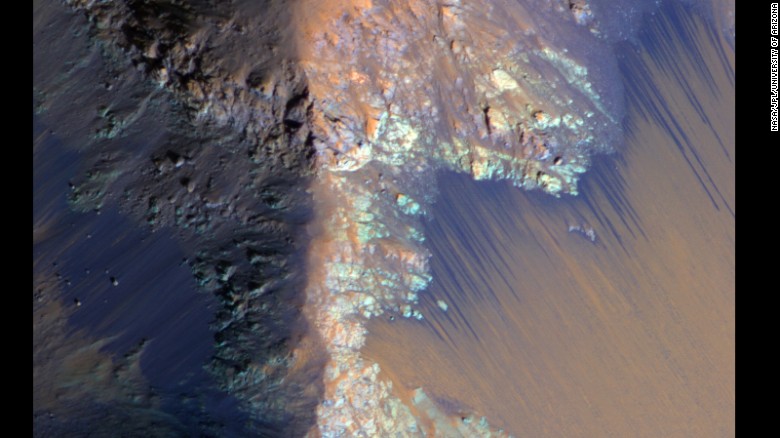



|

|

|
||||
|
Welcome to the GoFuckYourself.com - Adult Webmaster Forum forums. You are currently viewing our boards as a guest which gives you limited access to view most discussions and access our other features. By joining our free community you will have access to post topics, communicate privately with other members (PM), respond to polls, upload content and access many other special features. Registration is fast, simple and absolutely free so please, join our community today! If you have any problems with the registration process or your account login, please contact us. |

 |
|
|||||||
| Discuss what's fucking going on, and which programs are best and worst. One-time "program" announcements from "established" webmasters are allowed. |
|
|
Thread Tools |
|
|
#1 |
|
See Signature
Industry Role:
Join Date: Apr 2016
Location: noneya
Posts: 5,882
|
Pretty neat stuff!
 Since the discovery of dark streaks on the slopes of Mars in 2011, astronomers have been excited about potential evidence of water beneath the surface of the red planet. If there are subsurface water flows on Mars, they could allow life -- even on a microbial level -- to exist as well. But further study of these recurring slope lineae, known as RSL, is revealing something else. Those dark streaks may be the result of granular flows like sand and dust, according to a study published Monday in the journal Nature Geoscience. The study is the product of a research team made up of representatives from the US Geological Survey, the Planetary Science Institute, the University of Arizona and Durham University in England. The study is based on observations made with the High Resolution Imaging Science Experiment camera on the Mars Reconnaissance Orbiter. The RSL have been perplexing scientists since their discovery. Thousands recur during the warmest season on Mars each year, growing longer and darker until they fade in winter. They're found on steep, rocky slopes on the darkest areas of Mars: the equator, the northern plains, the southern mid-latitudes. more Flows of 'water' on Mars may actually be sand, study says - CNN
__________________
Try out WP-SCRIPT The Best Tube Script |
|
|

|
|
|
#2 |
|
Natalie K
Industry Role:
Join Date: Apr 2010
Location: Spain
Posts: 19,724
|
looking at that, yes, it looks like solid material on a hill, maybe sand with Kyanite, sodalite or quartz

__________________
My official site  Custom vids Custom vids  Make money & get into the business Make money & get into the business First time girls First time girlsSkype: GspotProductions - "Converting traffic into income since 2005" |
|
|

|


|
|||||||
|
|||||||
| Bookmarks |
| Tags |
| mars, study, flows, water, science, university, rsl, streaks, sand, slopes, dark, discovery, resolution, reconnaissance, experiment, imaging, orbiter, camera, institute, survey, planetary, geological, perplexing, arizona, observations |